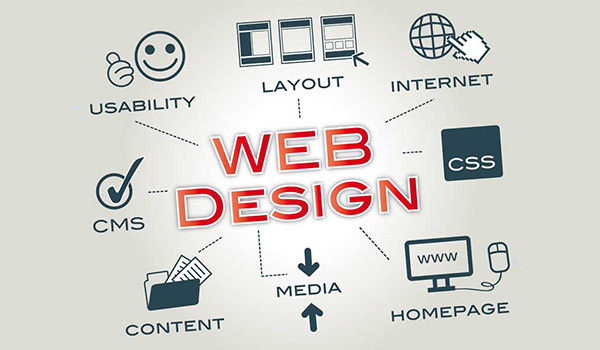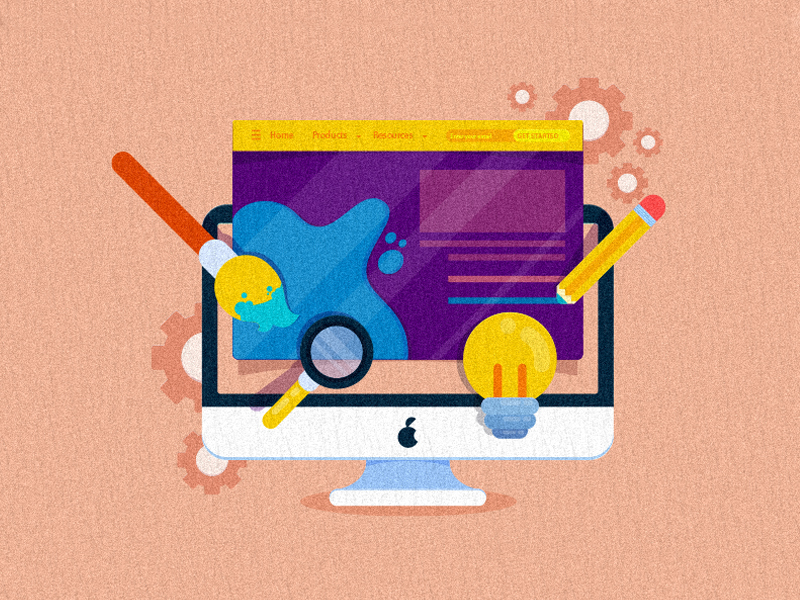The Most Effective Kinds Of Web Design to Enhance Individual Experience and Interaction
In the ever-evolving landscape of digital communication, the performance of Web design substantially influences customer experience and involvement. Different style strategies, such as minimal, receptive, and interactive layouts, each offer special benefits that can cater to diverse user needs.
Minimal Website Design
As digital landscapes become increasingly cluttered, minimal Web layout has become an effective strategy to enhancing user experience. This layout approach focuses on simplicity, focusing on necessary aspects while removing unneeded diversions. By making use of adequate white area, simple navigating, and a minimal shade combination, minimalist design cultivates quality and routes individual interest to key content.
The core concept of minimalist Web layout is to produce a seamless communication for customers. By reducing cognitive load, customers can quickly understand details without really feeling overwhelmed. This straight strategy not only improves use however likewise motivates engagement, as site visitors are more probable to discover a website that is very easy and visually enticing to navigate.
Furthermore, minimalist design often highlights typography and imagery, utilizing these elements strategically to share messages successfully. This focus on crucial elements can enhance brand name identity and produce a memorable individual experience. Fundamentally, minimalist Web style is not simply a pattern; it is a thoughtful approach that recognizes the relevance of user-centered design. By removing supplementary elements, developers can produce an extra engaging, effective, and delightful Web experience for all individuals.
Responsive Website Design
In today's diverse digital atmosphere, receptive Web layout has come to be essential for creating a seamless individual experience throughout a wide range of gadgets. As customers accessibility websites on smartphones, laptop computers, tablet computers, and desktop computers, the capacity of a website to adapt its layout and web content to different screen dimensions and resolutions is crucial.
Responsive website design uses adaptable grids, photos, and CSS media inquiries to make sure that Web material is presented ideally, no matter the tool used. This strategy not just boosts the aesthetic appeal of a website yet additionally considerably enhances usability. Users are extra most likely to engage with a website that offers a consistent experience, as it removes the stress of needing to zoom in or scroll excessively.
By embracing receptive design, businesses can improve their exposure and get to a wider target market. In summary, receptive Web design is an essential technique that improves customer experience, engagement, and overall contentment.
Interactive Web Style
Receptive Web design prepares for improving customer experience, but interactive website design takes this a step additionally by involving users in an extra dynamic method - Aligned Position Web Design. By including aspects such as animations, clickable models, and real-time responses, interactive Web design mesmerizes individuals, attracting them into a richer browsing experience
This technique not just fosters engagement but likewise motivates customers to discover material actively instead of passively consuming it. Techniques such as gamification, where individuals make benefits for finishing tasks, can dramatically enhance the time invested in a site and improve general satisfaction. Moreover, interactive features can simplify complex info, making it extra enjoyable and digestible.

Including interactive design components can also cause higher conversion rates, as users are more probable to involve with a website that actively entails them. Aligned Position Web Design. Ultimately, interactive website design transforms customer experiences into unforgettable trips, guaranteeing that visitors return time and again
Apartment Design
Characterized by its minimalistic strategy, flat style highlights simpleness and capability, stripping away unnecessary aspects and concentrating on essential functions. This style approach focuses on use, guaranteeing that customers can browse user interfaces easily and performance. By using a tidy visual, flat design removes the clutter typically discovered in a lot more luxuriant designs, consequently improving user concentrate on content and functionality.
The hallmark of flat style hinges on its use bold shades, straightforward typography, and geometric forms. These aspects add to a visually appealing user interface that is both approachable and contemporary. Furthermore, flat design cultivates a feeling of clearness, enabling users to recognize crucial activities and info without interruption.
Additionally, flat layout is particularly efficient in receptive Web style, as its simpleness converts well across different devices and screen dimensions. By focusing on necessary features, flat style not just meets individual demands but likewise motivates seamless communication, making it a vital element of efficient Web design techniques.
Flexible Website Design
Adaptive website design tailors the individual experience by developing multiple repaired designs customized to various display dimensions and gadgets. Unlike receptive layout, which fluidly adjusts a single layout, adaptive style Get the facts uses distinct layouts for particular breakpoints, making sure optimum discussion on numerous systems. This strategy allows developers to concentrate on the distinct qualities of each tool, boosting use by supplying specifically what customers require based upon their context.
Among the main advantages of adaptive website design is its ability to optimize load times and performance. By serving customized web content and photos that fit the customer's tool, websites can minimize information use and enhance loading speeds. This is especially useful for individuals with slower links or minimal information plans.

In addition, adaptive style helps with an extra regular and regulated branding experience. see this Because developers produce numerous layouts, they can make sure that the visual aspects straighten with the brand's identification throughout different platforms - Aligned Position Web Design. This causes a cohesive individual experience, enhancing engagement and promoting individual retention
Verdict
In conclusion, the combination of minimal, receptive, and interactive website design principles dramatically enhances individual experience and involvement. Minimal design fosters clearness and focus, while receptive layout guarantees versatility throughout numerous tools, promoting accessibility. Interactive design mesmerizes customers via vibrant elements, encouraging exploration and personalization. Collectively, these style comes close to add to the production of user-friendly environments that not only boost satisfaction but also drive higher conversion rates, additional resources underscoring their vital value in contemporary website design methods.

Minimal style promotes quality and emphasis, while responsive design guarantees versatility throughout different tools, advertising ease of access. Collectively, these style approaches contribute to the development of easy to use atmospheres that not just boost satisfaction but also drive higher conversion rates, underscoring their crucial value in modern Web style methods.
Comments on “Aligned Position Web Design: Tailor-Made Web Design Solutions for Maximum User Engagement”